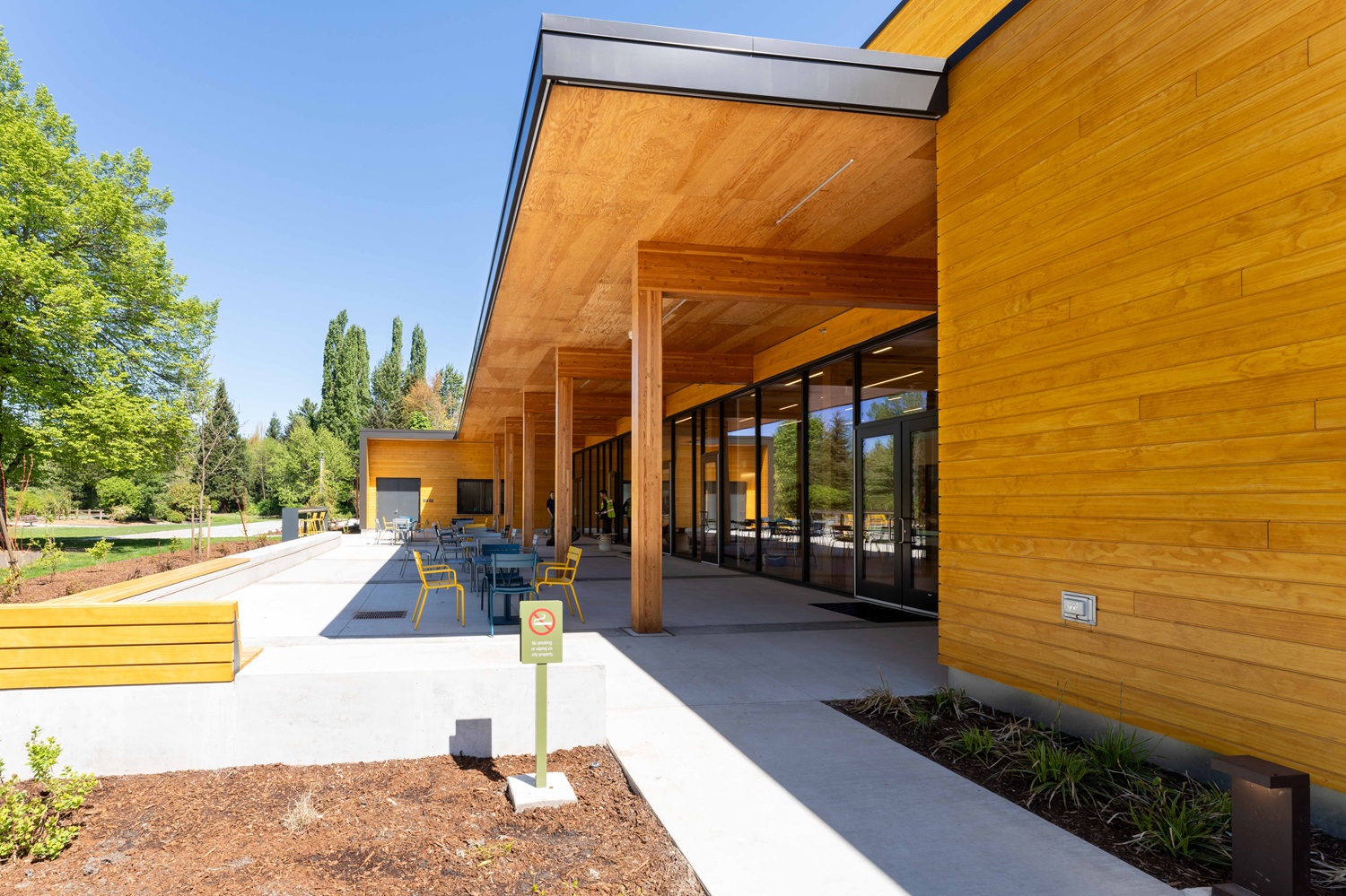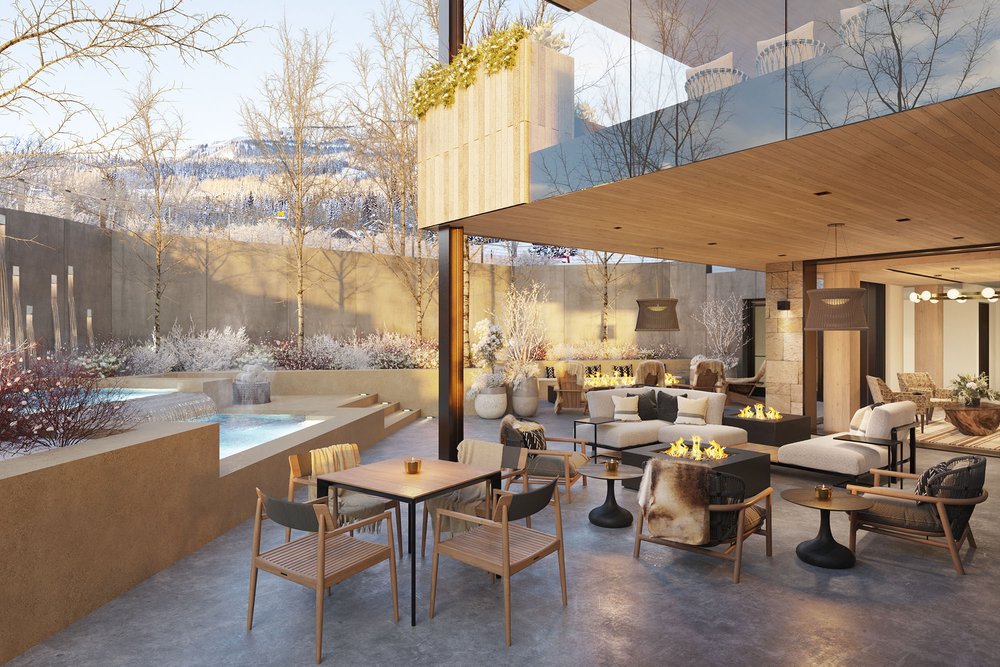Level up your mass timber IQ & stay up-to-date on industry trends


Have you ever walked into a space and instantly felt that it was designed with you in mind? That’s the feeling echoing through the halls of the newly expanded Washington Center for Deaf and Hard of Hearing Youth (CDHY) aka Washington School for the Deaf, Divine Academic & Hunter Gymnasium in Vancouver, Washington. This isn't just another school construction project; it's a testament to thoughtful design, deep collaboration, and a profound commitment to creating an optimal learning environment for deaf and hard of hearing students.
For the students and staff at CDHY’s Washington School for the Deaf (WSD), the completion of the Divine Academic Building and the Hunter Physical Education Building marks a significant milestone. As the state’s only residential American Sign Language (ASL) – English bilingual school for deaf and hard of hearing students, CDHY plays a vital role in ensuring these young individuals reach their full potential. The expansion, a two-year endeavor, brings much-needed modern facilities to a campus that hadn't seen new classroom construction since 1971.
So, what makes this project so special for the architects, engineers, and construction experts involved? It’s the intentional integration of DeafSpace principles, the innovative use of mass timber, and the unwavering focus on the unique sensory and communication needs of the students.

Bringing this vision to life was a collaborative effort spearheaded by Skanska, a leading construction and development firm, and Mithun, their design partner. The Washington State Department of Enterprise Services (DES) provided project management, ensuring the project aligned with the state’s goals. But perhaps the most crucial aspect of the process was the deep engagement with the CDHY community itself.
Trevor Wyckoff, Senior Vice President and Account Manager at Skanska, emphasized this collaborative spirit, stating, “We wanted to be part of the Center for Deaf and Hard of Hearing Youth project because of the positive impact it would have on the students, families, staff, and entire community”. He further noted, “We collaborated with Mithun, the Department of Enterprise Services, and CDHY, to engage students and staff throughout the design and building process, creating a sense of ownership and excitement for the new buildings”. This wasn't just about constructing buildings; it was about co-creating spaces that truly served their users.
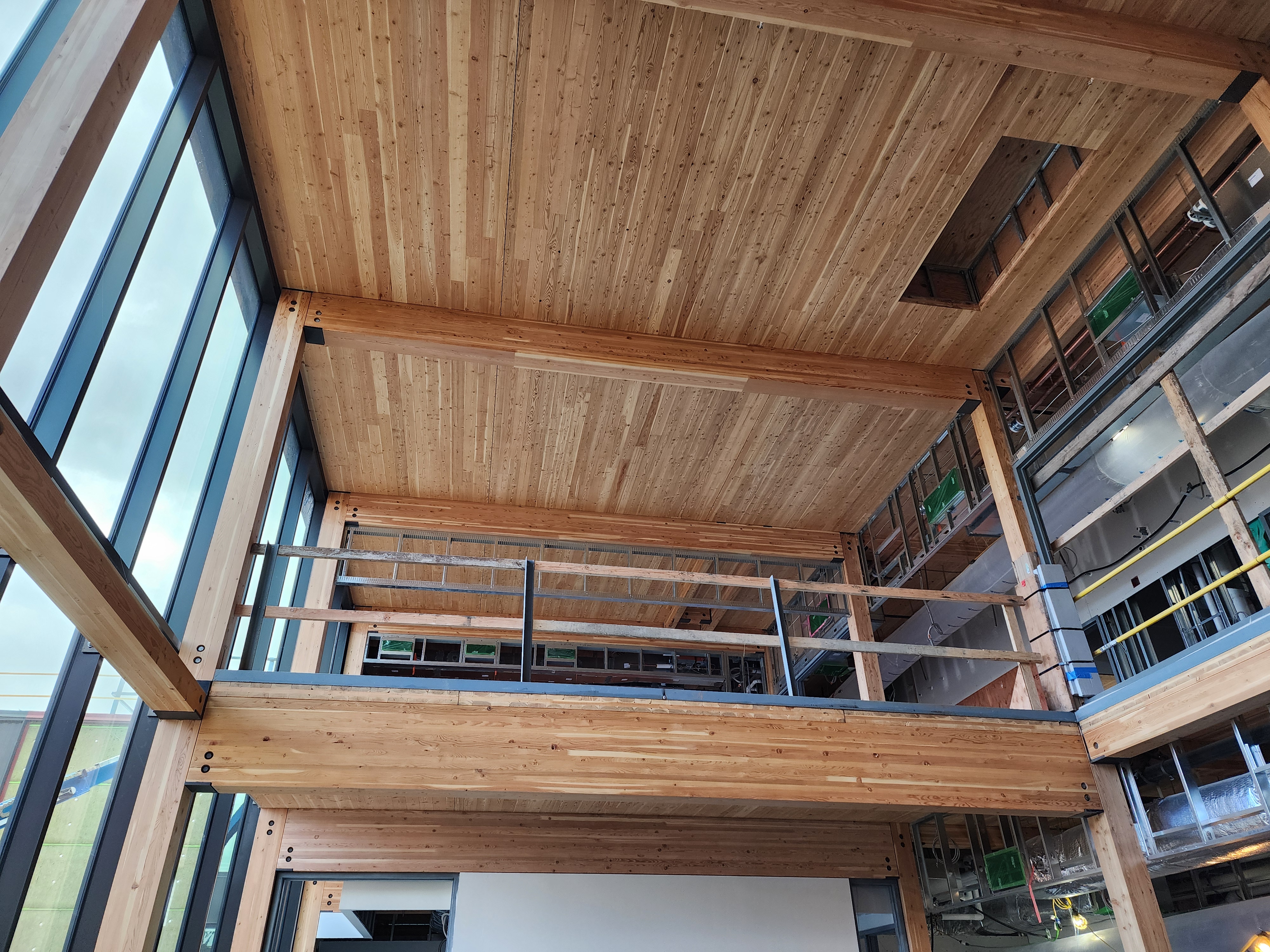
Mithun partner JoAnn Hindmarsh Wilcox echoed this sentiment, saying, “Our team is honored to be conversation partners with the Washington School for the Deaf community”. She highlighted the core principle guiding the design: “Understanding the importance of maintaining Deaf culture, and ensuring students have full access to information, become our collective hearthstone as we worked together to consider every aspect of the Deaf experience and tune the buildings accordingly”.
Even beyond the core team, specialist expertise played a vital role. Consultants Hansel Bauman and Robert T. Sirvage brought their knowledge of DeafSpace Guidelines to inform every aspect of the design and construction.
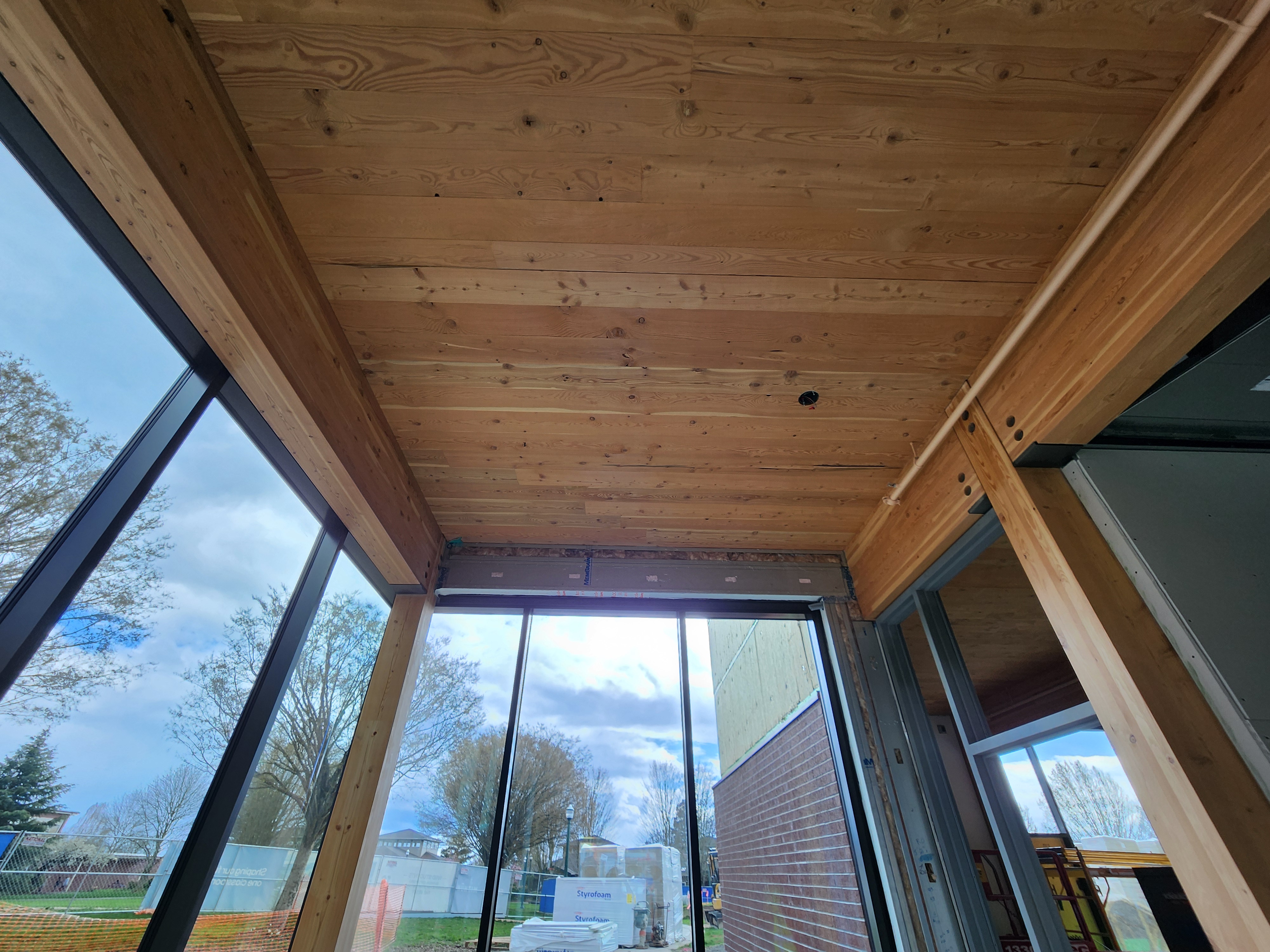
What exactly are DeafSpace Guidelines? They are a set of design principles that address the unique spatial and sensory needs of deaf and hard of hearing individuals. Alan Halleck, Skanska project executive, even studied ASL to better understand these guidelines and the community’s needs. As Halleck explained, these principles require that “multi-purpose spaces are designed to enhance American Sign Language (ASL)-English bilingual instructional practices through improved technology infrastructure and incorporating DeafSpace design principles, including sensory reach, space and proximity, mobility, light and color, and acoustics”.
Shauna Bilyeu, executive director at CDHY, underscored the importance of these considerations: “This expansion means two brand new and much-needed spaces for improved learning and athletics in this unique student environment,” she said. She further elaborated on the tangible design outcomes, mentioning “wider-set hallways for active ASL (American Sign Language) communication and so much other care and concern for the needs of our unique community”. Wider hallways allow students to walk side-by-side while signing, maintaining visual communication.
The design also considered acoustic vibration as a communication method, with floors accommodating these vibrations. Natural lighting was another key element, with extensive use of large windows – often with low-glare coatings to prevent eye strain. As Bilyeu noted, the partners “cared so deeply about getting it right”.
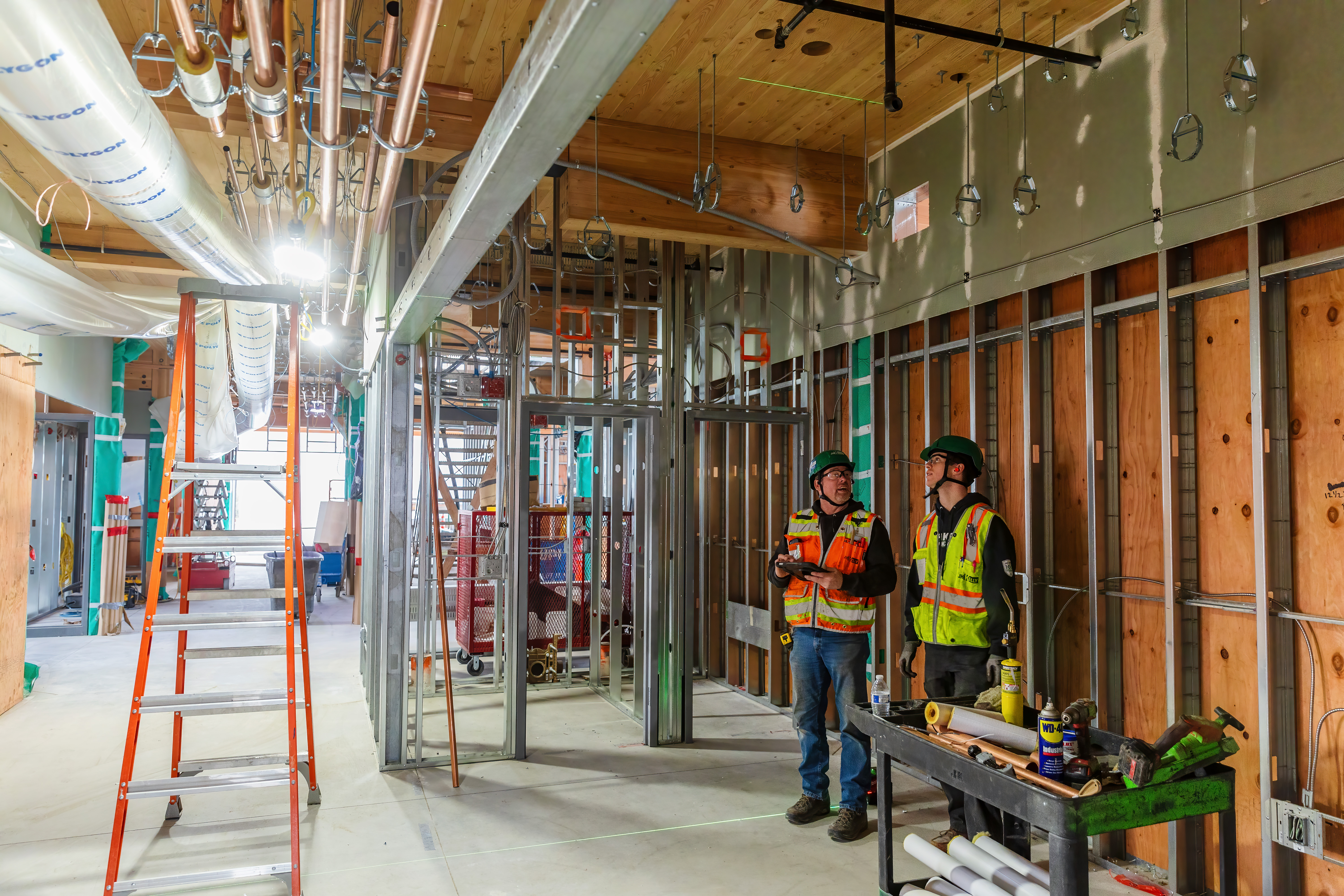
Beyond the DeafSpace considerations, the project stands out for its innovative use of mass timber. The Divine Academic Hall incorporates glue-laminated timber for columns and beams, and three-ply cross-laminated timber (CLT) for the roof structure and floors. According to Whitney Geier, Director of Marketing at Skanska, the mass timber species for both glulam and CLT is Douglas-Fir-Larch, harvested from forests in the Kootenays in British Columbia. The project utilized 131 cubic meters of glulam (a running length of 5770 feet) and 308 cubic meters of CLT (roughly 10,876 cubic feet).
This choice of material wasn't arbitrary. Informed by Mithun’s Building Better Schools R+D study, the mass timber system proved to be cost-competitive with traditional building methods and resulted in a ratio of less than .50 cubic feet of wood fiber per gross square foot of building area, below industry standard.
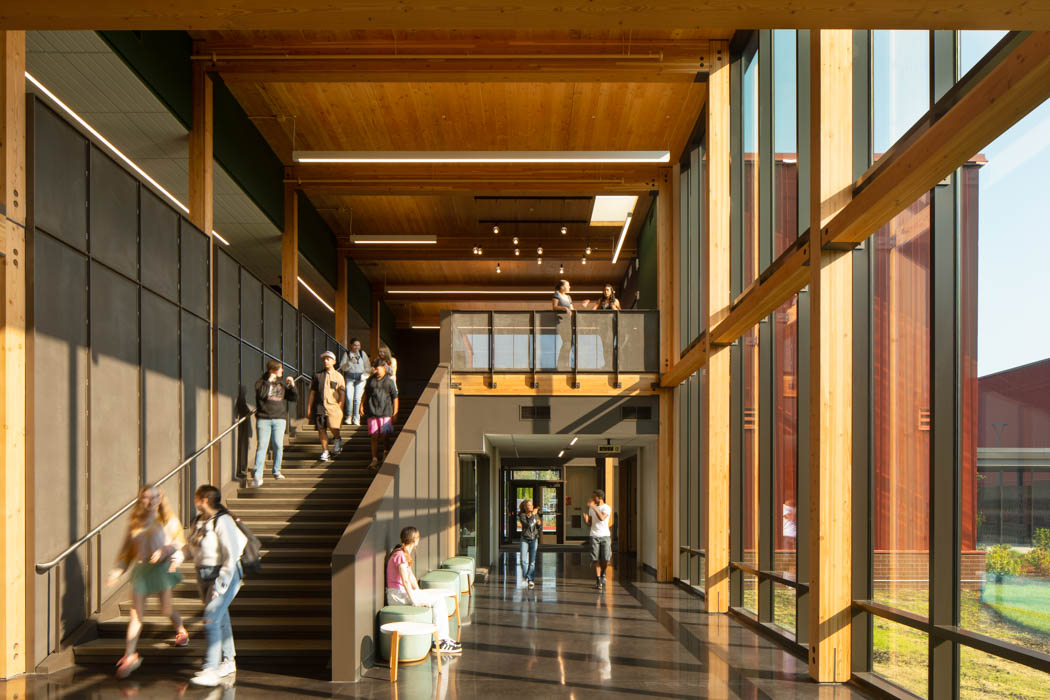
But the benefits extended beyond cost. As noted, Kalesnikoff said “the mass timber design was optimized to bring biophilic benefits to student well-being and learning outcomes.” Furthermore, it helps make the most of acoustic vibrations to extend occupants’ sensory reach, a crucial element for deaf individuals who rely heavily on visual and tactile cues.
Shauna Bilyeu expressed her personal connection to the material: “Many of our students live on campus from Sunday through Friday, so it was important that the school feel like home. I wanted buildings that were happy and full of light. To me, that meant mass timber”. The use of wood also pays homage to the school's history, connecting back to a demolished campus landmark, the Red Barn, which held deep community significance.
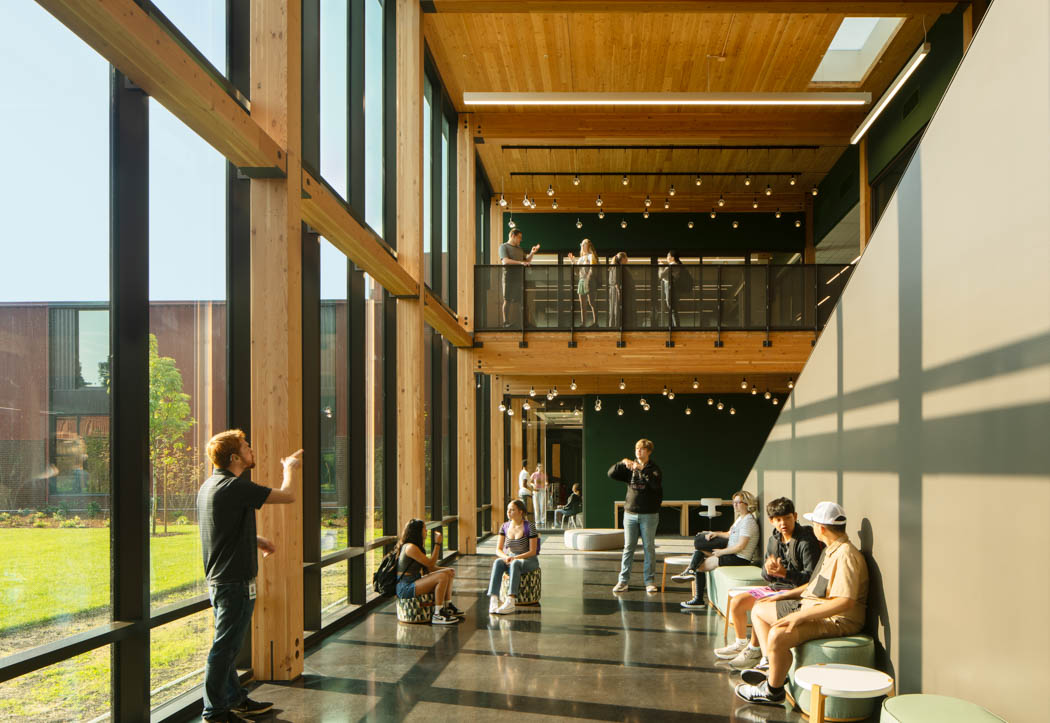
No construction project is without its hurdles. Abe Ott, Director of Marketing & Proposals at JH Kelly, the design/build MEP trade partner said "there is a critical need for early detailing and coordination due to the custom fabrication and lead times of the CLT components.” He emphasized the close collaboration between the electrical, mechanical, and plumbing teams to maximize space within the mass timber structure and preserve its aesthetic.
Ott also pointed out the challenges posed by the Pacific Northwest weather. “As the building was erected during rain and snow events, the mass timber elements ended up pulling in moisture,” he explained. To mitigate this, heaters and dehumidifiers were used to dry the wood as the building envelope was completed.
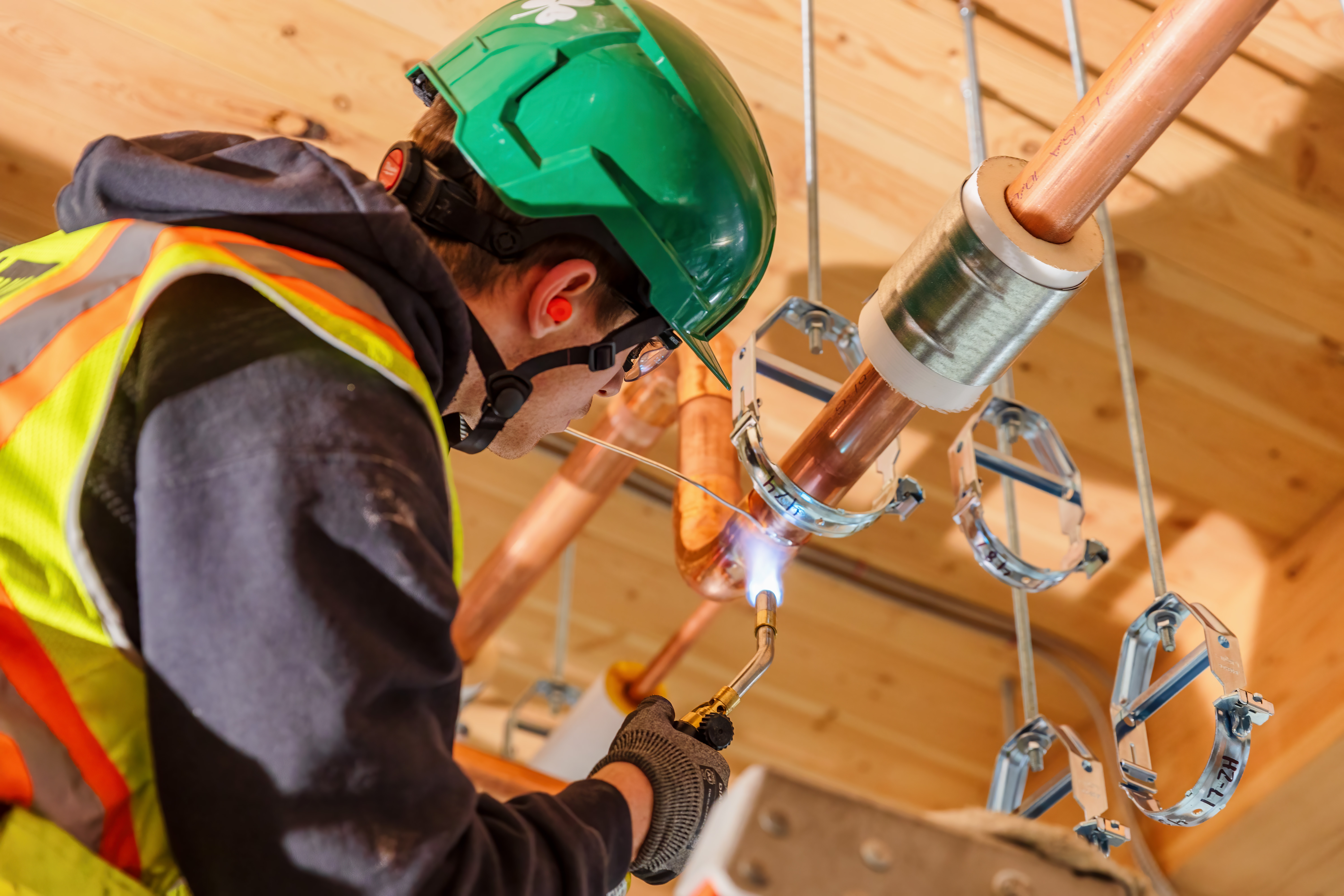
Whitney Geier from Skanska shared unique challenges encountered during the design phase. Initially, mass timber wasn't part of the proposed design. The subsequent addition required a new builder’s risk insurance policy with a significantly higher premium. Through collaboration between Skanska, PCS Structural Solutions (the engineer), and Mithun, they submitted a detailed risk mitigation application, successfully negotiating the insurance fee down.
This project also had exposed conduit on the surface of the floor deck that needed to be addressed. “Using USG's solution, this installation allowed for the exposed conduits to be encapsulated in the first layer of poured gypsum flooring rather than routing out the CLT deck to bury the conduit. This provided an efficient solution for hiding the conduit while saving both time and labor. The applicator, Ultra Quiet Floors, assisted with installation of the USG Levelrock® Brand gypsum underlayment and sound mat on the project, drawing on their extensive knowledge of installing such systems in mass timber construction.” - Jennifer Chambers, USG Specifications Manager
The project is on track to achieve LEED Gold certification, demonstrating a commitment to sustainability. According to Whitney Geier, the project has an embodied carbon emission of 88.5 kgCO2e/m2, exceeding most benchmark projects.
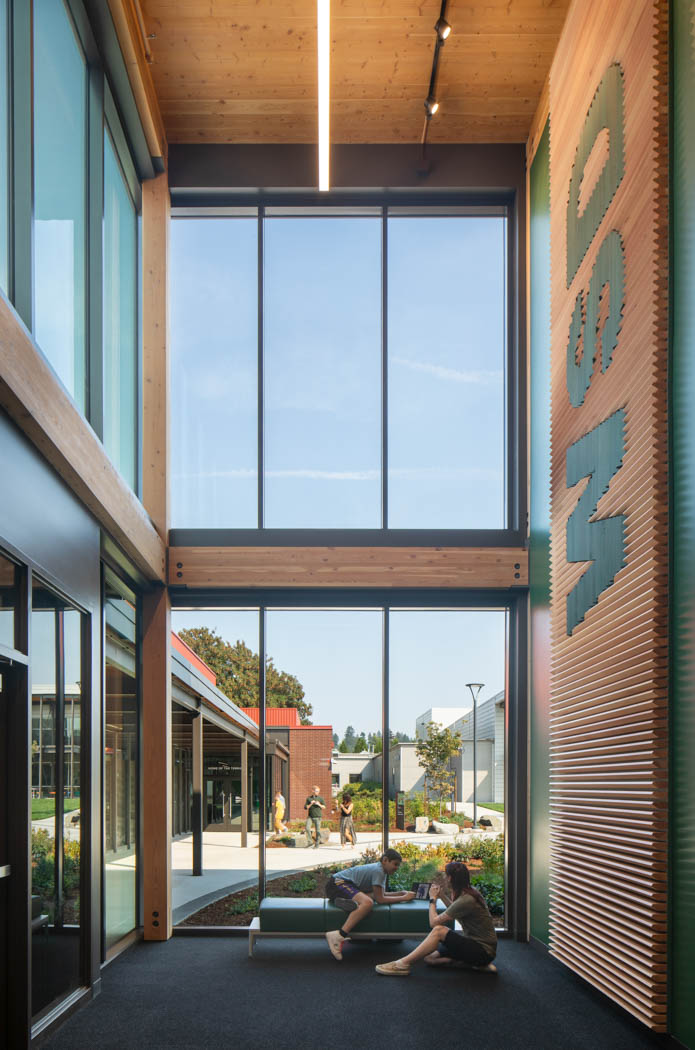
The expanded CDHY campus isn't just about new buildings; it's about creating a holistic environment that fosters linguistic, cognitive, social, and emotional development while honoring Deaf culture. The new 35,000-square-foot Divine Academic Building includes innovative classrooms and a media center, while the 15,000-square-foot Hunter Gymnasium provides a purpose-designed space for physical education. A sensory-focused and accessible playground, a secure walkway connecting the buildings, and an improved parking area further enhance the campus. A new outdoor field is slated for completion in Spring 2025.
As Washington Governor Jay Inslee remarked at the ribbon-cutting ceremony, “We are witnessing how partners in funding, design and construction have modeled this innovative solution for this special needs population. Washington state is proud to support the needs of deaf and hard of hearing youth”. - Skanska
For the students, families, and staff at CDHY, this expansion represents more than just new facilities – it signifies a renewed commitment to their unique needs and a brighter future for generations to come. As Shauna Bilyeu aptly stated, “We now have a beautiful school that is unique to our community. It’s sustainable and something that the larger metro Vancouver area is proud of”.
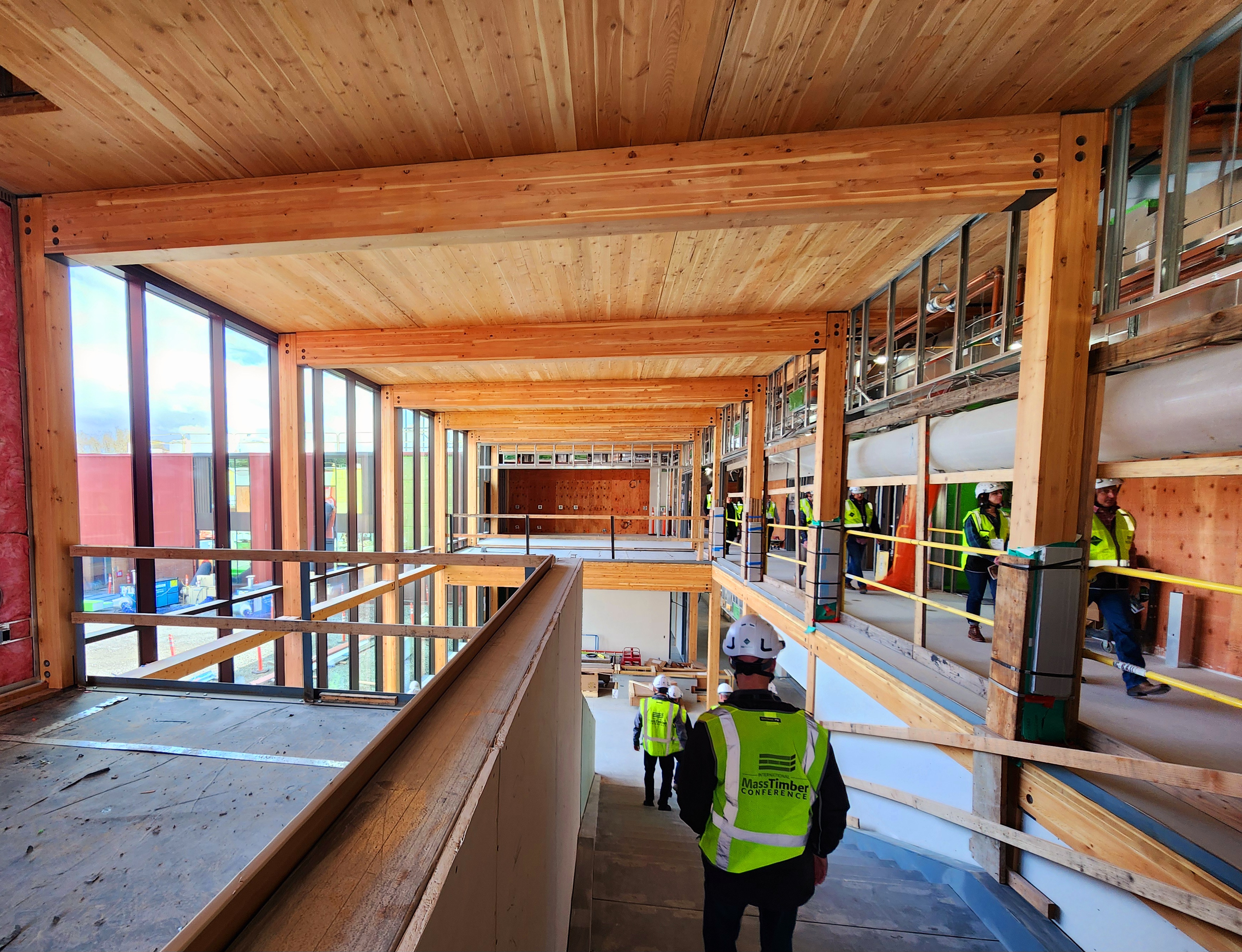
Project Team:
Photography: Candra Burns , Lara Swimmer, and Abe Ott
Candra's Editor Note: Washington State is leveling up the accommodation in old spaces. WOW!! Growing up in a place with this kind of history and beauty has made me fortunate. I ended up with an owner trained Service Dog later in life who is now retired. I understand the sensory needs of people and had to come see this project while under construction. I knew that exposed mass timber and the windows would make light everywhere in the room appear bright for students to navigate better. The stairs are wide enough for students to do sign language and walk at the same time with multiple people at once. I accommodated myself my whole life for sensory needs and this is the best school for future needs of those with the visual, tactile, and spatial needs.
Frequently Asked Questions:
1. What are DeafSpace Guidelines, and how were they incorporated into the CDHY expansion project? DeafSpace Guidelines are design principles focused on the visual, tactile, and spatial needs of deaf and hard of hearing individuals. They were incorporated throughout the design process through collaboration with DeafSpace consultants, resulting in wider hallways for signing, strategic use of lighting, and consideration of acoustic vibrations.
2. Why was mass timber chosen as a primary building material for the Divine Academic Hall? Mass timber was chosen for its cost-competitiveness, biophilic benefits promoting well-being, its ability to enhance sensory reach through acoustic vibrations, its aesthetic appeal in creating a home-like environment, and its lower embodied carbon footprint, aligning with sustainability goals.
3. What were some of the unique challenges faced during the construction of this project? Unique challenges included the need for meticulous early coordination due to the prefabricated nature of the CLT, managing moisture in the mass timber during rainy weather, and addressing unforeseen structural conditions related to an existing basement.
4. How did the design team ensure the new facilities met the specific educational and cultural needs of the deaf and hard of hearing students? The design team engaged students and staff throughout the design process, conducted deaf-led workshops, and prioritized visual access and ASL-English bilingual instructional practices through the incorporation of DeafSpace principles and improved technology infrastructure.
5. What is the expected sustainability performance of the new CDHY facilities? The project is on track to achieve LEED Gold certification and demonstrates strong sustainability performance through the use of mass timber, resulting in an embodied carbon emission of 88.5 kgCO2e/m2, which exceeds most benchmark projects.

